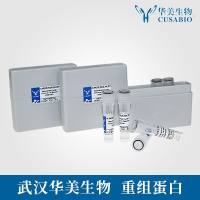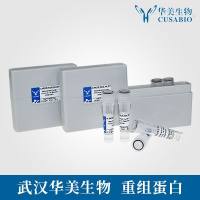Preparation and Analysis of Glycan Microarrays
互联网
- Abstract
- Table of Contents
- Materials
- Figures
- Literature Cited
Abstract
Determination of the binding specificity of glycan?binding proteins (GBPs), such as lectins, antibodies, and receptors, has traditionally been difficult and laborious. The advent of glycan microarrays has revolutionized the field of glycobiology by allowing simultaneous screening of a GBP for interactions with a large set of glycans in a single format. This unit describes the theory and method for production of two types of glycan microarrays (chemo/enzymatically synthesized and naturally derived), and their application to functional glycomics to explore glycan recognition by GBPs. These procedures are amenable to various types of arrays and a wide range of GBP samples. Curr. Protoc. Protein Sci. 64:12.10.1?12.10.29. © 2011 by John Wiley & Sons, Inc.
Keywords: glycan microarrays; natural glycan microarrays; glycan?binding specificities; Consortium for Functional Glycomics
Table of Contents
- Introduction
- Basic Protocol 1: The Binding Specificity of Biotinylated Plant Lectins Detected with Fluorescent Streptavidin
- Alternate Protocol 1: Detecting the Glycan Epitopes for Mouse Monoclonal Antibodies Using Fluorescent Anti‐Mouse IgG
- Alternate Protocol 2: Specificity of Directly Labeled Influenza Virus Binding to Sialylated Glycans
- Generation of Natural Glycan Arrays
- Basic Protocol 2: Preparation of a Natural Glycan Microarray
- Basic Protocol 3: Binding Assay for Natural, Defined Glycan Microarray
- Reagents and Solutions
- Commentary
- Literature Cited
- Figures
- Tables
Materials
Basic Protocol 1: The Binding Specificity of Biotinylated Plant Lectins Detected with Fluorescent Streptavidin
Materials
Alternate Protocol 1: Detecting the Glycan Epitopes for Mouse Monoclonal Antibodies Using Fluorescent Anti‐Mouse IgG
Alternate Protocol 2: Specificity of Directly Labeled Influenza Virus Binding to Sialylated Glycans
Basic Protocol 2: Preparation of a Natural Glycan Microarray
Materials
Basic Protocol 3: Binding Assay for Natural, Defined Glycan Microarray
Materials
|
Figures
-
Figure 12.10.1 Preparation of natural glycan microarrays. After isolating the glycans from a natural source, they are labeled with a bifunctional fluorescent dye (e.g., AEAB), captured on glass slides, and interrogated by glycan‐binding proteins (GBPs). View Image -
Figure 12.10.2 Schematic of natural, defined glycan array printed with 14 identical subarrays per slide. A multi‐chamber adapter can be placed over the slide surface to create 14 individual chambers for 14 different, simultaneous assays. In this example, each of the 40 glycans is printed in replicates of 4. In some cases, the printed compounds include controls such as glycopeptides and biotin. View Image -
Figure 12.10.3 Con A binding to the CFG glycan array. The top panel is an image of fluorescently detected Con A binding to the glycan array slide. The replicates of one set of 6 spots, corresponding to one glycan, are noted. The bottom panel is a histogram of quantified Con A binding to the glycan array, where the x ‐axis is the chart number (glycan number) and the y ‐axis is relative fluorescent units (RFU). View Image -
Figure 12.10.4 The binding of biotinylated SNA to a natural glycan array containing 52 GAEABs and four controls. After obtaining a fluorescent image of the biotinylated SNA bound by cyanine5‐streptavidin, binding is quantified and displayed as a histogram of the average RFU bound to each glycan. The eight glycan structures that were bound by SNA are displayed next to their respective peak. View Image
Videos
Literature Cited
| Literature Cited | |
| Amonsen, M., Smith, D.F., Cummings, R.D., and Air, G.M. 2007. Human parainfluenza viruses hPIV1 and hPIV3 bind oligosaccharides with alpha2‐3‐linked sialic acids that are distinct from those bound by H5 avian influenza virus hemagglutinin. J. Virol. 81:8341‐8345. | |
| Blixt, O., Head, S., Mondala, T., Scanlan, C., Huflejt, M.E., Alvarez, R., Bryan, M.C., Fazio, F., Calarese, D., Stevens, J., Razi, N., Stevens, D.J., Skehel, J.J., van Die, I., Burton, D.R., Wilson, I.A., Cummings, R., Bovin, N., Wong, C.H., and Paulson, J.C. 2004. Printed covalent glycan array for ligand profiling of diverse glycan binding proteins. Proc. Natl. Acad. Sci. U.S.A. 101:17033‐17038. | |
| Bohorov, O., Andersson‐Sand, H., Hoffmann, J., and Blixt, O. 2006. Arraying glycomics: A novel bi‐functional spacer for one‐step microscale derivatization of free reducing glycans. Glycobiology 16:21C‐27C. | |
| Byres, E., Paton, A.W., Paton, J.C., Löfling, J.C., Smith, D.F., Wilce, M.C., Talbot, U.M., Chong, D.C., Yu, H., Huang, S., Chen, X., Varki, N.M., Varki, A., Rossjohn, J., and Beddoe, T. 2008. Incorporation of a non‐human glycan mediates human susceptibility to a bacterial toxin. Nature 456:648‐652. | |
| Chen C, Fu, Z., Kim, J.J., Barieri, J.T., and Baldwin, M.R. 2009. Gangliosides as high affinity receptors for tetnus neurotoxin. J. Biol. Chem. 284:26569‐26577. | |
| Connor, R.J., Kawaoka, Y., Webster, R.G., and Paulson, J.C. 1994. Receptor specificity in human, avian, and equine H2 and H3 influenza virus isolates. Virology 205:17‐23. | |
| Cummings, R.D. 2009 The repertoire of glycan determinants in the human glycome. Mol. Biosyst. 5:1087‐1104. | |
| de Boer, A.R., Hokke, C.H., Deelder, A.M., and Wuhrer, M. 2007. General microarray technique for immobilization and screening of natural glycans. Anal. Chem. 79:8107‐8113. | |
| Dingle, T., Wee, S., Mulvey, G.L., Greco, A., Kitova, E.N., Sun, J., Lin, S., Klassen, J.S., Palcic, M.M., Ng, K.K., and Armstrong, G.D. 2008. Functional properties of the carboxy‐terminal host cell‐binding domains of the two toxins, TcdA and TcdB, expressed by Clostridium difficile. Glycobiology 18:698‐706. | |
| Disney, M.D. and Seeberger, P.H. 2004. The use of carbohydrate microarrays to study carbohydrate‐cell interactions and to detect pathogens. Chem. Biol. 11:1701‐1707. | |
| Elkins, R.P. 1989. Multi‐analyte immunoassay. J. Pharma. Biom. Anal. 7:155‐168. | |
| Feizi, T., Stoll, M.S., Yuen, C.T., Chai, W., and Lawson, A.M. 1994. Neoglycolipids: Probes of oligosaccharide structure, antigenicity, and function. Methods Enzymol. 230:484‐519. | |
| Feizi, T., Fazio, F., Chai, W., and Wong. C.H. 2003. Carbohydrate microarrays ‐ a new set of technologies at the frontiers of glycomics. Curr. Opin. Struct. Biol. 13:637‐645. | |
| Gildersleeve, J.C., Oyelaran, O., Simpson, J.T., and Allred, B. 2008. Improved procedure for direct coupling of carbohydrates to proteins via reductive amination. Bioconjug. Chem. 19:1485‐1490. | |
| Gourdine, J.P., Cioci, G., Miguet, L., Unverzagt, C., Silva, D.V., Varrot, A., Gautier, C., Smith‐Ravin, E.J., and Imberty, A. 2008. High affinity interaction between a bivalve C‐type lectin and a biantennary complex‐type N‐glycan revealed by crystallography and microcalorimetry. J. Biol. Chem. 283:30112‐30120. | |
| Hardman, K.D. and Ainsworth, C.F. 1972. Structure of concanavalin A at 2.4‐A resolution. Biochemistry 11:4910‐4919. | |
| Heller, M.J. 2002. DNA microarray technology: Devices, systems, and applications. Annu. Rev. Biomed. Eng. 4:129‐153. | |
| Krishnamurthy, V.R., Wilson, J.T., Cui, W., Song, X., Lasanajak, Y., Cummings, R.D., and Chaikof, E.L. 2010. Chemoselective immobilization of peptides on abiotic and cell surfaces at controlled densities. Langmuir 26:7675‐7678. | |
| Kulesh, D.A., Clive, D.R., Zarlenga, D.S., and Greene, J.J. 1987. Identification of interferon‐modulated proliferation‐related cDNA sequences. Proc. Natl. Acad. Sci. U.S.A. 84:8453‐8457. | |
| Kumari, K., Gulati, S., Smith, D.F., Gulati, U., Cummings, R.D., and Air, G.M. 2007. Receptor binding specificity of recent human H3N2 influenza viruses. Virol. J. 4:42. | |
| Liu, Y., Feizi, T., Campanero‐Rhodes, M.A., Childs, R.A., Zhang, Y., Mulloy, B., Evans, P.G., Osborn, H.M., Otto, D., Crocker, P.R., and Chai, W. 2007. Neoglycolipid probes prepared via oxime ligation for microarray analysis of oligosaccharide‐protein interactions. Chem. Biol. 14:847‐859. | |
| Luallen, R.J., Agrawal‐Gamse, C., Fu, H., Smith, D.F., Doms, R.W., and Geng, Y. 2010. Antibodies against Manalpha1,2‐Manalpha1,2‐Man oligosaccharide structures recognize envelope glycoproteins from HIV‐1 and SIV strains. Glycobiology 20:280‐286. | |
| Luyai, A., Lasanajak, Y., Smith, D.F., Cummings, R.D., and Song, X. 2009. Facile preparation of fluorescent neoglycoproteins using p‐nitrophenyl anthranilate as a heterobifunctional linker. Bioconjug Chem. 20:1618‐1624. | |
| Oyelaran, O., Li, Q., Farnsworth, D., and Gildersleeve, J.C. 2009. Microarrays with varying carbohydrate density reveal distinct subpopulations of serum antibodies. J. Proteome. Res. 8:3529‐3538. | |
| Park, S. and Shin, I. 2002. Fabrication of carbohydrate chips for studying protein‐carbohydrate interactions. Angew Chem. Int. Ed. Engl. 41:3180‐3182. | |
| Park, S., Lee, M.R., and Shin, I. 2007. Fabrication of carbohydrate chips and their use to probe protein‐carbohydrate interactions. Nat. Protoc. 2:2747‐2758. | |
| Park, S., Lee, M.R., and Shin, I. 2009. Construction of carbohydrate microarrays by using one‐step, direct immobilizations of diverse unmodified glycans on solid surfaces. Bioconjug. Chem. 20:155‐162. | |
| Pollack, J.R. 2009. DNA microarray technology. Introduction. Methods Mol. Biol. 556:1‐6. | |
| Ramsay, G. 1998. DNA chips: State‐of‐the art. Nat. Biotechnol. 16:40‐44. | |
| Ratner, D.M., Adams, E.W., Su, J., O'Keefe, B.R., Mrksich, M., and Seeberger, P.H. 2004. Probing protein‐carbohydrate interactions with microarrays of synthetic oligosaccharides. Chembiochem 5:379‐382. | |
| Rogers, G.N. and D'Souza, B.L. 1989. Receptor binding properties of human and animal H1 influenza virus isolates. Virology 173:317‐322. | |
| Song, X., Xia, B., Lasanajak, Y., Smith, D.F., and Cummings, R.D. 2008. Quantifiable fluorescent glycan microarrays. Glycoconj. J. 25:15‐25. | |
| Song, X., Lasanajak, Y., Rivera‐Marrero, C., Luyai, A., Willard, M., Smith, D.F., and Cummings, R.D. 2009a. Generation of a natural glycan microarray using 9‐fluorenylmethyl chloroformate (FmocCl) as a cleavable fluorescent tag. Anal. Biochem. 395:151‐160. | |
| Song, X., Lasanajak, Y., Xia, B., Smith, D.F., and Cummings, R.D. 2009b. Fluorescent glycosylamides produced by microscale derivatization of free glycans for natural glycan microarrays. ACS Chem. Biol. 4:741‐750. | |
| Song, X., Xia, B., Stowell, S.R., Lasanajak, Y., Smith, D.F., and Cummings, R.D. 2009c. Novel fluorescent glycan microarray strategy reveals ligands for galectins. Chem. Biol. 16:36‐47. | |
| Stevens, J., Blixt, O., Glaser, L., Taubenberger, J.K., Palese, P., Paulson, J.C., and Wilson, I.A. 2006. Glycan microarray analysis of the hemagglutinins from modern and pandemic influenza viruses reveals different receptor specificities. J. Mol. Biol. 355:1143‐1155. | |
| Stoll, M.S., Feizi, T., Loveless, R.W., Chai, W., Lawson, A.M., and Yuen, C.T. 2000. Fluorescent neoglycolipids. Improved probes for oligosaccharide ligand discovery. Eur. J. Biochem. 267:1795‐1804. | |
| Stowell, S.R., Arthur, C.M., Slanina, K.A., Horton, J.R., Smith, D.F., and Cummings, R.D. 2008. Dimeric Galectin‐8 induces phosphatidylserine exposure in leukocytes through polylactosamine recognition by the C‐terminal domain. J. Biol. Chem. 283:20547‐20559. | |
| Stowell, S.R., Arthur, C.M., Dias‐Baruffi, M., Rodrigues, L.C., Gourdine, J.P., Heimburg‐Molinaro, J., Ju, T., Molinaro, R.J., Rivera‐Marrero, C., Xia, B., Smith, D.F., and Cummings, R.D. 2010. Innate immune lectins kill bacteria expressing blood group antigen. Nat. Med. 16:295‐301. | |
| Subramanyam, S., Smith, D.F., Clemens, J.C., Webb, M.A., Sardesai, N., and Williams, C.E. 2008. Functional characterization of HFR1, a high‐mannose N‐glycan‐specific wheat lectin induced by Hessian fly larvae. Plant Physiol. 147:1412‐1426. | |
| Varki, A., Cummings, R.D., Esko, J., Freeze, H., Hart, G., and Marth, J. 2009. Essentials of Glycobiology. Cold Spring Harbor Laboratory Press, Cold Spring Harbor, N.Y. | |
| von Gunten, S., Smith, D.F., Cummings, R.D., Riedel, S., Miescher, S., Schaub, A., Hamilton, R.G. and Bochner, B.S. 2009. Intravenous immunoglobulin contains a broad repertoire of anticarbohydrate antibodies that is not restricted to the IgG2 subclass. J. Allergy Clin. Immunol. 123:1268‐1276. |





